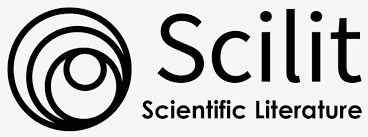Perrbandingan Validitas Fuzzy Clustering pada Fuzzy C - Means dan Particle Swarms Optimazation (PSO) pada Pengelompokan Kelas
DOI:
https://doi.org/10.14421/jiska.2019.41-03Abstract
Clustering adalah metode yang membagi objek data ke dalam kelompok berdasarkan informasi yang ditemukan dalam data yang menggambarkan objek dan hubungan di antara mereka. Dalam analis cluster berbasis partisi metode K-Means dan Metode Fuzzy C-Means yang merupakan metode clustering yang sering dan lazim banyak digunakan masih banyak kelemahan. Dalam beberapa tahun terakhir, Particle Swarm Optimization (PSO) telah berhasil diterapkan untuk sejumlah masalah pengelompokan dunia nyata dengan konvergensi cepat dan efektif untuk data dimensi tinggi. Pengukuran yang dilakukan untuk kualitas clustering dengan fuzzy haruslah diukur dengan validitas cluster yang tepat dan sesuai dengan kriterianya masing – masing. Pengukuran perbandingan yang sangat sesuai dengan fuzzy clustering yaitu partition coefficient (PC),classification entropy (CE),Partition Index (PI),Fukuyama Sugeno Index (FS), Xie Beni Index (XBI),Modified Partition Coefficient (MPC),Partition Coefficient and Exponential Sparation (PCAES) Index.References
A. M. Fahim, A. M. Salem, F. A. Torkey and M. A. Ramadan, 2006, “An Efficient enhanced K-Meansclustering algorithm”, journal of Zhejiang University, 10(7): 16261633
Arikunto, Suharsimi, 2009. “Dasar-Dasar Evaluasi Pendidikan”. Jakarta : Bumi Aksara
Franki Yusuf Bisilisin, Yeni Herdiyeni, Bib Paruhum Silalahi, “K-Means Clustering Optimization Using Particle Swarm Optimization On Image Based Medicinal Plant Identification System”, Jurnal Ilmu Komputer Agri-Informatika, Vol 3 Nomor 1 hal 38-47
G. Komarasamy and Amitabh Wahi, 2011, “Improving th Cluster Performance by Combining PSO and K-Means Algorithm”, Ictact Journal Soft Computing (IJSC), Volume: 01,
Hesam Izakian, Ajith Abraham 2009 “Fuzzy Clustering Using Hybrid Fuzzy c-means andFuzzy Particle SwarmOptimization” Czech Republic :VSB-Technical University of Ostrava Ostrava,IEEE
J. Kennedy and R. Eberhart. “Swarm Intellligence”, 2001, Morgan Kaufmann Publishers, Inc., San Fransisco, CA
Lekshmy P Chandran,K A Abdul Nazeer, 2011, “An Improved Clustering Algorithm based on K-Means and Harmony Search Optimization”, IEEE
Margono, 2000“Metodologi Penelitian Pendidika”.Jakarta: Rineka Cipta
Mulyasa, 2005. “Menjadi Guru Profesional”. Bandung : PT. Remaja Rosdakarya
M. Jainuri, 2010. Pengaruh Sikap Dan Tingkat IntelegensiTerhadap Prestasi Belajar Matematika SiswaKelas Ii Smk Tri Bhakti BangkoTahun Pelajaran 2009/2010
Mathews, 2005, “An Introduction to Particle swarm optimization”, Department of Computer Science, IDAHO U.S.A
Nazeer K, A. Abdul and Sebastian M.P, 2009, “Improving the Accuracy and Efficiency of the K-MeansClustering Algorithm”, Proceeding of the World Congress on Engineering, 1:308-312.
Purwanto, Ngalim, 1996. “Psikologi Pendidikan”. Bandung : PT. Remaja Rosdakarya
Purwanto, Ngalim, 2008. “Prinsip-Prinsip dan Teknik Evaluasi Pengajaran”.Bandung : PT. Remaja Rosdakarya
Pritesh Vora, Bhavesh Oza, 2013, “A Suvey on K-Mean Clustering and Particle Swarm Optimization”, International Journal of Science and Modern Engineering (IJISME), ISSN: 2319-6386, Vol-1, Issue 3
Panchal VK, Kundra H, Kaur J, 2009, “Comparative study of particle swarm optimization based unsupervised clustering techniques”, International Jurnal of Computer Science andNetwork Security, 9(10):132±140.
Slameto, 2003. “Belajar dan Faktor-Faktor yang Mempengaruhinya”. Jakarta : PT. Rineka Cipta
Xiaohui Cui, Thomas E. Potok, 2005,“Document Clustering Analysis Based on Hybrid PSO+K-Means Algorithm”
Ujjwal Maulik, Sanghamitra Bandyopadhyay, 2000,“Genetic algorithm-based clustering technique”, The Journal of the Pattern Recognation Society 33 (2000) 1455-1465, Elsevier
Van der Merwe DW, Engelbrect AP, 2003, “Data clustering using Perticle Swarm Optimization”, University of Pretoria, IEEE 0-7803-7804-0/03/417.00, hlm 215-220
Downloads
Published
How to Cite
Issue
Section
License
Authors who publish with this journal agree to the following terms as stated in http://creativecommons.org/licenses/by-nc/4.0
a. Authors retain copyright and grant the journal right of first publication with the work simultaneously licensed under a Creative Commons Attribution License that allows others to share the work with an acknowledgement of the work's authorship and initial publication in this journal.
b. Authors are able to enter into separate, additional contractual arrangements for the non-exclusive distribution of the journal's published version of the work (e.g., post it to an institutional repository or publish it in a book), with an acknowledgement of its initial publication in this journal.
c. Authors are permitted and encouraged to post their work online (e.g., in institutional repositories or on their website) prior to and during the submission process, as it can lead to productive exchanges, as well as earlier and greater citation of published work.









